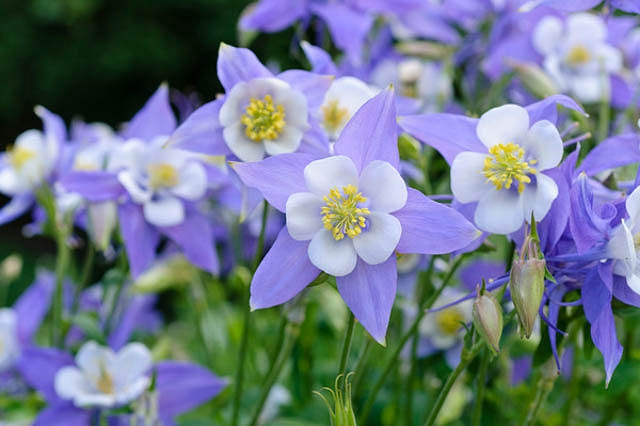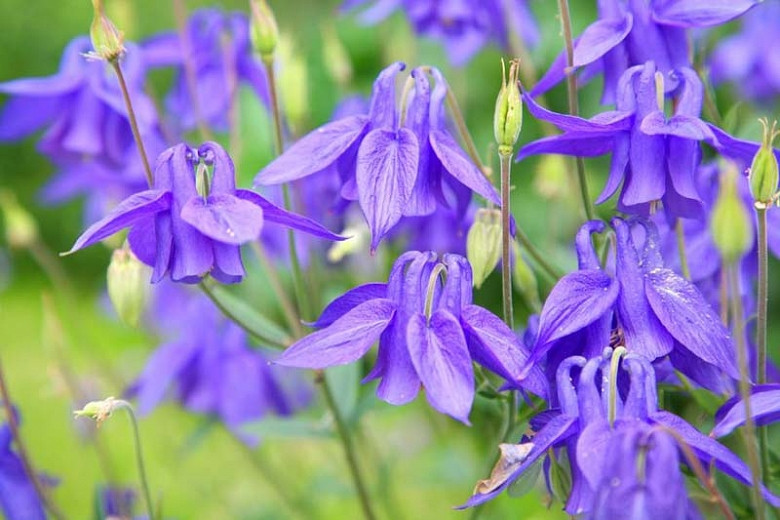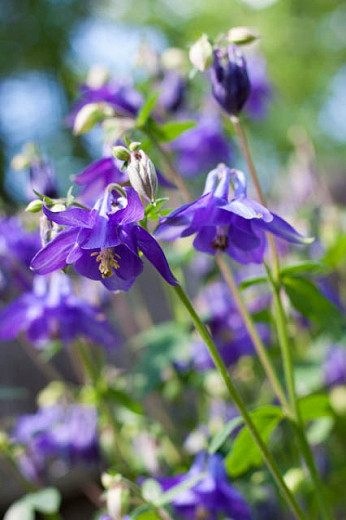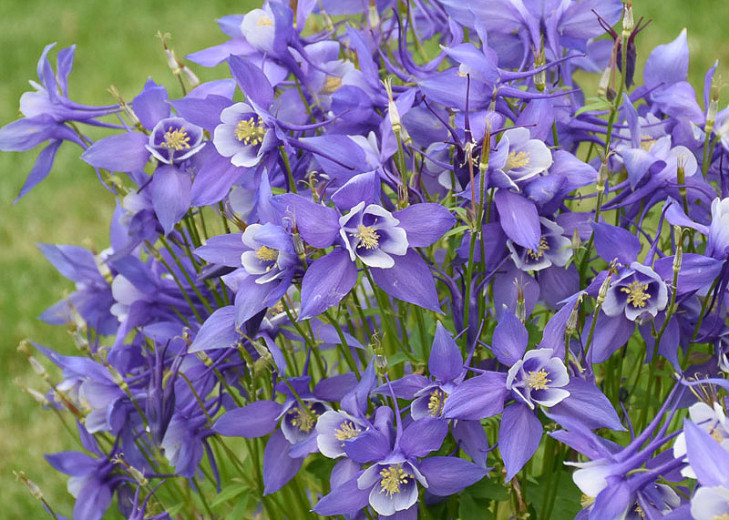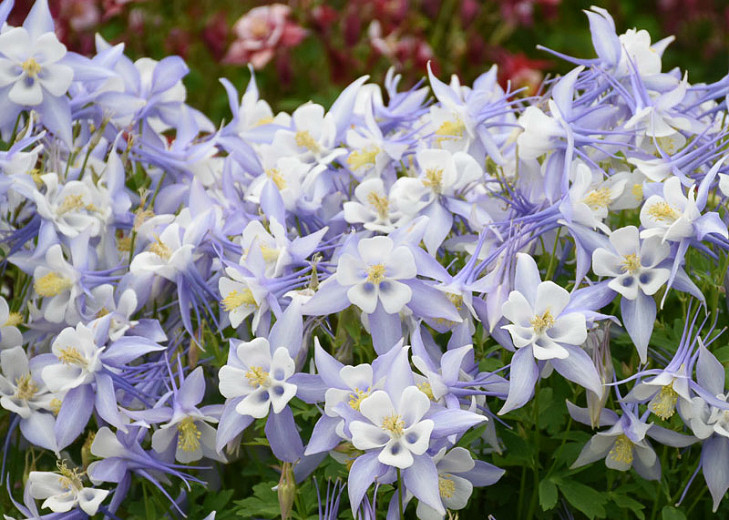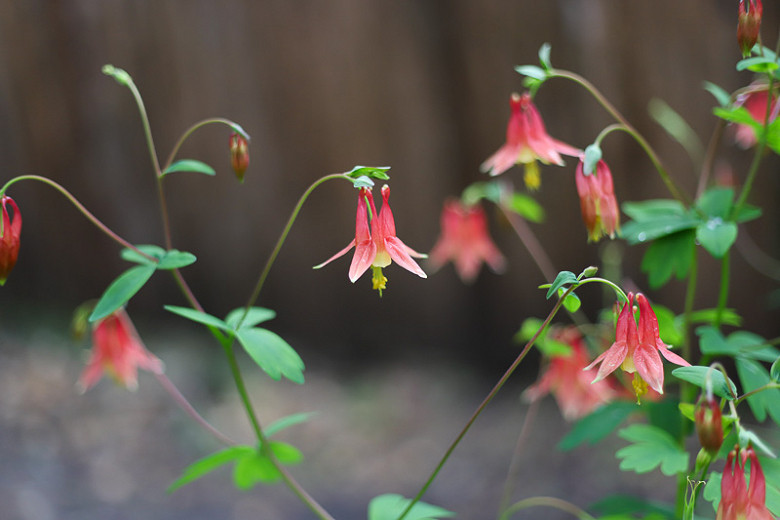Aquilegia caerulea (Rocky Mountain Columbine)
Native from Montana to Arizona and New Mexico, award-winning Aquilegia caerulea, commonly known as Rocky Mountain Columbine, features huge, 2-3 in. wide (5-7 cm), long-spurred, two-tone flowers with star-like, creamy white petals and violet-blue sepals and spurs. Bushy yellow stamens add a third color. Irresistible!
Native from Montana to Arizona and New Mexico, award-winning Aquilegia caerulea, commonly known as Rocky Mountain Columbine, features huge, 2-3 in. wide (5-7 cm), long-spurred, two-tone flowers with star-like, creamy white petals and violet-blue sepals and spurs. Bushy yellow stamens add a third color. Irresistible! The blossoms are upward facing, for a perfect display, and rise elegantly above a lovely fern-like, gray-green foliage. Blooming for 4-6 weeks in late spring to early summer, this perennial is Colorado's State Flower and a lovely addition in the shade garden!
- Recipient of the prestigious Award of Garden Merit of the Royal Horticultural Society for its outstanding qualities
- Free-flowering, this Columbine grows in a bushy, upright clump, up to 24 in. tall (60 cm) and 12 in. wide (30 cm). This perennial is generally short-lived but will self-seed prolifically to form large colonies in satisfactory growing conditions.
- Performs best in full sun to part shade, in average, medium moisture, well-drained soils. Seriously dislikes poorly drained soils! Rich, moist soils in part shade are preferred. Do not let the soil dry out.
- Attracts hummingbirds and butterflies, but is ignored by rabbits and deer!
- Easy to grow, this plant is a welcomed addition to beds, borders, rock gardens, cottage gardens, shade gardens, or naturalized areas. This Columbine may also be grown in containers or window boxes, and it makes good cut flowers lasting up to 2 weeks in a vase!
- Susceptible to leaf miner.
- May be grown from seed sown directly in the garden in spring (after the danger of frost has passed).
- Remove faded flowering stems to promote additional bloom. Cut to the ground when the foliage declines (around midsummer).
- Contact with the sap may irritate the skin
Requirements
| Hardiness | 3 – 9 |
|---|---|
| Heat Zones | 1 – 7 |
| Climate Zones | 1, 2, 3, 4, 5, 6, 7, 8, 9, 10, 11, 14, 15, 16, 17, 18, 19, 20, 21, 22, 23, 24, A1, A2, A3 |
| Plant Type | Perennials |
| Plant Family | Aquilegia |
| Exposure | Full Sun, Partial Sun |
| Season of Interest | Spring (Late)Summer (Early) |
| Height | 1' – 2' (30cm – 60cm) |
| Spread | 9" – 1' (22cm – 30cm) |
| Spacing | 9″ – 12″ (22cm – 30cm) |
| Water Needs | Average |
| Maintenance | Low |
| Soil Type | Chalk, Clay, Loam, Sand |
| Soil pH | Acid, Alkaline, Neutral |
| Soil Drainage | Moist but Well-Drained, Well-Drained |
| Characteristics | Cut Flowers, Plant of Merit, Showy |
| Native Plants | United States, Midwest, South Dakota, Pacific Northwest, Idaho, Rocky Mountains, Colorado, Montana, Utah, Wyoming, Southwest, Nevada, Arizona, New Mexico |
| Tolerance | Deer, Rabbit |
| Attracts | Butterflies, Hummingbirds |
| Garden Uses | Beds and Borders, Patio and Containers |
| Garden Styles | City and Courtyard, Gravel and Rock Garden, Informal and Cottage, Prairie and Meadow |
